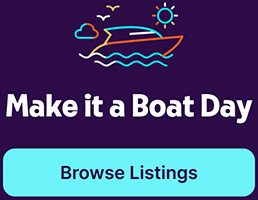Anchoring your boat is a crucial part of boating that ensures safety and stability. The length of your anchor line, also known as the rode, plays a significant role in this process. But how do you determine the right length for your boat? Let's delve into the details.
Understanding the Basics of Anchor Line
The anchor line, or rode, is the connection between your boat and the anchor. It's a critical component that ensures your boat remains stationary when anchored. The length of the anchor line can significantly influence the effectiveness of the anchoring system.
The anchor line is typically made up of chain, rope, or a combination of both. The choice of material depends on the type of boat, the conditions in which you'll be boating, and personal preference.
Chain Rode
Chain rode is known for its durability and strength. It's ideal for rocky or coral bottoms where a rope might get cut. The weight of the chain also helps in setting the anchor securely into the seabed.
However, chain rode is heavy, which can be a disadvantage for smaller boats. It also requires a windlass to handle, adding to the overall cost and complexity of the anchoring system.
Rope Rode
Rope rode is lighter and easier to handle than chain. It's also more affordable and doesn't require a windlass. However, it's less durable and can get damaged easily, especially on rocky or sharp bottoms.
Many boaters use a combination of chain and rope rode, taking advantage of the strengths of both materials. The chain part helps in setting the anchor, while the rope part reduces the overall weight and cost.
Determining the Right Anchor Line Length
The length of your anchor line should be determined based on the depth of the water and the conditions in which you'll be anchoring. The rule of thumb is to use a scope of 5:1 to 7:1, meaning that for every foot of water depth, you should have 5 to 7 feet of anchor line out.
For example, if you're anchoring in 10 feet of water, you should have between 50 and 70 feet of anchor line out. This ensures that the anchor sets properly and provides enough horizontal pull to keep the boat in place.
Factors Influencing Anchor Line Length
While the 5:1 to 7:1 scope rule is a good starting point, there are several factors that can influence the optimal anchor line length. These include:
- Bottom Conditions: In rocky or coral bottoms, a shorter anchor line might be sufficient as the anchor can set easily. In soft mud or sand, a longer anchor line might be required to ensure a secure hold.
- Weather Conditions: In calm weather, a shorter anchor line might be sufficient. However, in rough weather or strong currents, a longer anchor line can provide more stability.
- Boat Size: Larger boats typically require longer anchor lines due to their higher windage and weight.
How to Measure Anchor Line Length
Once you've determined the right anchor line length for your boat, you need to measure it accurately. This can be done using a measuring tape or marked rope. Remember to include the length of the chain if you're using a combination rode.
It's also a good idea to mark your anchor line at regular intervals, so you know how much line you've let out when anchoring. This can be done using colored markers or zip ties.
Conclusion
Determining the right anchor line length for your boat is essential for safe and effective anchoring. By understanding the basics of anchor line and considering factors like water depth, bottom conditions, weather conditions, and boat size, you can ensure that your boat stays put when you want it to.
Remember, when in doubt, it's always safer to err on the side of more anchor line. Happy boating!
Ready to Anchor Your Business in Success?
Now that you know how to secure your boat with the perfect anchor line length, it's time to secure your boating business with Getmyboat. List your boat for free and tap into a sea of opportunities. With our global audience, custom-built management tools, and comprehensive support, you'll navigate towards increased visibility and earnings effortlessly. Attract new customers, manage your fleet smoothly, and enjoy low transaction fees. Plus, with our insurance options, you'll have peace of mind every step of the way. Don't let this chance sail away—list your boat today and watch your business grow!






